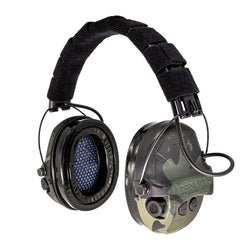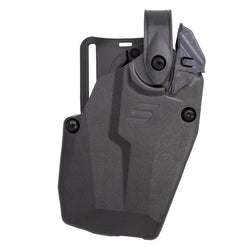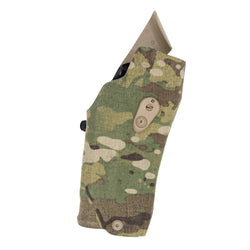EDC, or Everyday Carry, is a term that refers to exactly what it describes. It’s all the stuff you carry daily. It means your wallet, keys, gun, pocket knife, and more.
EDC has also become a popular subculture, with people doing ‘pocket dumps’ to show off their gear. The concept is interesting, but the subculture has created what I feel is the wrong mentality that focuses on consumerism and tokens rather than efficiency. It’s also exposed numerous EDC mistakes people seem to be making daily.
Avoid These EDC Mistakes
I wanted to point out a few of the more common EDC mistakes, discuss why they’re mistakes, and suggest what can be done to rectify or avoid them. Let’s dissect the world and culture of EDC, mistakes made, and easy corrections to make.

1. Not Carrying Everyday
The first and most common EDC mistake sits in purposeful spite of the term Everyday Carry. It’s a failure to carry every day. Sometimes, it becomes a burden, and sometimes, people get a little lazy and don’t want to carry their guns, knives, and medical kits.

We all feel the need to be a little lazy at times, but it’s an urge we need to resist. It’s the same urge that wants us to stay in bed instead of going to work. It’s the same urge that makes us want to skip the gym. That urge can be acknowledged and ignored. You likely do it every day. There is no reason you can’t ignore the urge not to carry your daily gear.
Carrying a firearm, a knife, medical gear, a multitool, light, and more gets annoying somewhat quickly, but the more you do it, the more used to it you get. Keep at it, every day, and it will become an easy habit to keep.
2. Going Too Big
One of the most common EDC mistakes is going too big. I mean that in more ways than one. A Lot of people invest in a big gun that’s hard to carry, or maybe a big knife, or a light that’s not pocket-sized. In a vacuum, it’s not that hard to carry a Glock 19 or even a 17, but when you carry a Glock 19 with a Surefire G2X and a Cold Steel Recon, then things can get uncomfy.

The size of the individual objects matters, but so does the amount of stuff you carry. I see a lot of EDC pocket dumps, and I’m left in disbelief at the amount of crap people claim to tote daily.
You’re telling me that you carry three knives, two guns, two lights, reloads for each gun, and two tubes of Chapstick? Who needs that much Chapstick? Not to forget the random totems like challenge coins that just take up space.
You need to find a good balance between the size and the number of items carried. It’s unlikely you’ll need a spare gun and spare knife during the events of your average day. Find the right balance that’s reasonable and comfortable to carry with a Batman-style utility belt.
3. Leaving Out The Most Useful Items
When it comes to everyday carry, a lot of people like to include the fun stuff. A gun is a must-have, and so is a fancy knife. I’ve seen people with a sling bag worth of crap who forget to pack some of the basics of EDC gear. The gear that’s most commonly left out isn’t the cool stuff, so it doesn’t get you the hearts and upvotes on social media.

That gear includes medical gear. You don’t need to get crazy with it, but a tourniquet isn’t hard to carry. It can be a lifesaving tool. You’re more likely to use your medical gear than your gun and two reloads.
Handheld lights are another tool that a lot of people forget, but they can be super handy. I also like to keep a nonlethal option, like a chemical irritant, in the vein of pepper spray.

I’m more likely to use my medical, handheld light, and pepper spray than my gun, so I prioritize those items over others. I don’t use a multitool that often, so one stays in the car but not on my person to make room for what I consider more useful gear.
4. Going Cheap On Critical Items
On average, A decent-quality firearm will cost you somewhere close to $500. Then a red dot will cost another $300 to $500. A light can cost $25 to $100. A good knife is anywhere from $50 to $75 and up. This stuff gets pricey quickly, and it’s tempting to spend the money on these hard items while ignoring certain critical ‘soft’ goods.

If I can spend $500 on a gun, I can spend $100 on a holster. I can spend the money necessary to obtain a belt that holds up my pants and offers support to my gear.
The same goes for any support gear I’m purchasing. This includes batteries for my lights and optics. I’m sure Dollar Tree batteries work fine in RC cars, but I want a more capable, longer-lasting option for my red dots and lights.
When it comes to medical gear, I only purchase it directly from manufacturers or trusted retailers. Don’t buy your CAT Tourniquet from Amazon; you might save a few dollars, but you’ll likely get a fraudulent tourniquet.
5. Not Training With Your Gear
The worst EDC mistake you can make is having all the right gear and failing to train with it. What’s the point of having the right gear if you don’t know how to use it? You should take a class that’s relevant to your situation. If you’re an average Joe, take a shooting course that requires you to shoot from concealment.

Medical training is another great tool. Your local Red Cross or fire station might host free or cheap CPR and Stop the Bleed classes. There are also dedicated training courses from companies like Dark Angel Medical.
Outside of formal training, you should practice. Practice dry fire, drawing, reloads, and applying a tourniquet. Practice using your light with dry fire. Having guns and gear is great, but knowing how to use them effectively is even better.
All Day Everyday
EDC mistakes are easy to make but often easy to rectify. This isn’t an exhaustive list, just a list of the most common mistakes I see people make.
My biggest piece of advice is to make your EDC make sense for you. Tailor it to your needs and your lifestyle. Don’t get caught in a cycle of purchasing more and more items you don’t need. Be practical, train hard, and be prepared for what your day brings.









